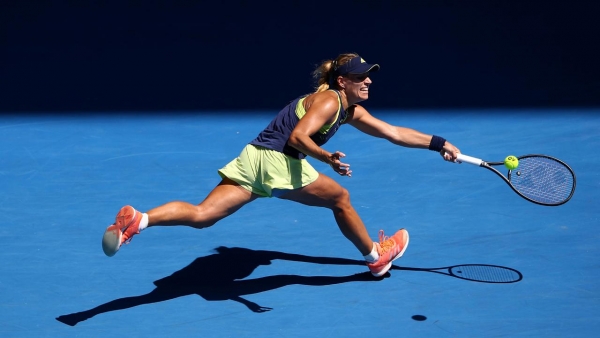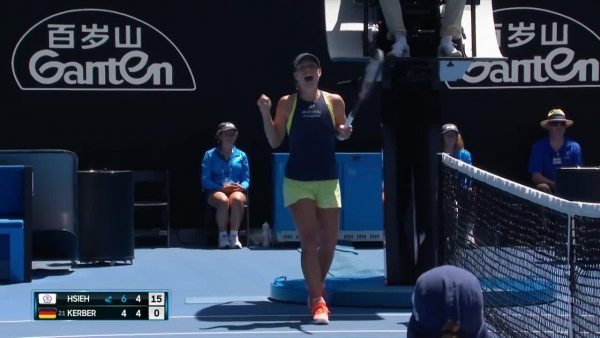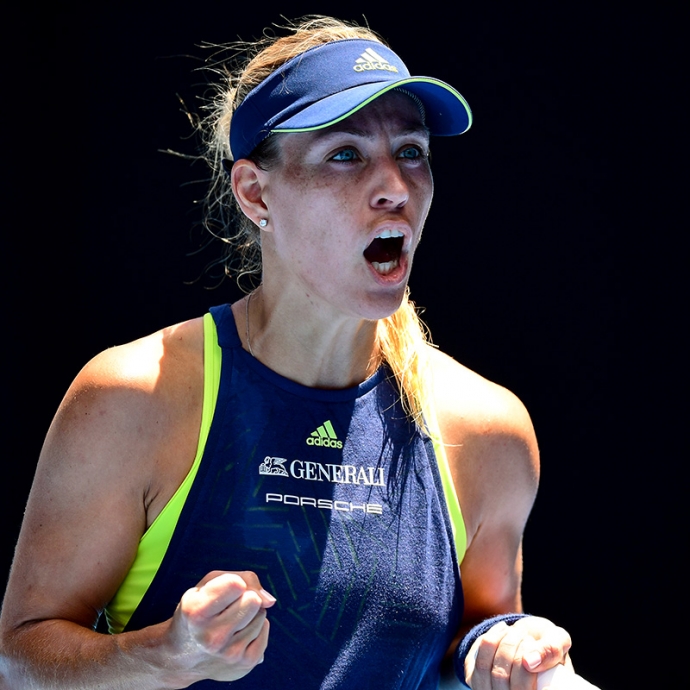Hsieh blinked. Kerber didn’t. That’s all you need to know.
You can get upset, and frustrated, and angry, and bang your racquet on the ground, but if you lose sight of the finish line, that ultimately hurts you more. In other words, you can’t deviate away from a winning game plan.
Angelique Kerber defeated Su-Wei Hsieh 4-6 7-5 6-2 to advance to the quarterfinals in one of the most captivating matches you would ever want to see.
It was old school, and off pace. It was also off the charts entertaining.
It certainly felt like there were more slice forehands hit than the rest of the tournament combined. It was decadently directional. Tactically, it was a throw-back match that reminded all the fans on Rod Laver Arena where our sport has evolved from. It delivered on every single level.
Hsieh was spectacular, and should have, could have won. She dominated baseline exchanges for almost two full sets with jaw-dropping mastery of the full spectrum of power levels. She ripped the ball, and then feathered drop shots that defied gravity as they appeared to go so slow. It seemed almost magical how they somehow crawled over the net.
For almost two full sets, Hsieh frustrated Kerber with deft touch, side-to-side aggression, and a strong belief that the No.88 player in the world was destined to upset the 2016 champion.
Then out of nowhere, Kerber went from imploding to winning eight straight points, and the match changed in the blink of an eye.
With Hsieh serving at 5-5 in the second set, she threw in a super slow lob for no apparent reason, then followed it up with some zippy two-handed forehands to blow Kerber’s mind. The German banged her stick on the ground, screamed at her coaches’ box, and generally lost her marbles. Hsieh crushed a second successive forehand winner on the next point, and Kerber was just six points from losing the match.
Hsieh moved to 40-15 after Kerber hit a backhand down the line into the middle of the net. Then quite literally out of nowhere, Kerber won eight straight points and the second set. Game over. Hsieh stopped dictating like she had. All of a sudden, it felt like she hoped she was going to win the point.
She reached for the finish line. Never reach for the finish line.
Kerber deserves credit for modifying her game plan and attacking a lot more late in the second set. More power helped her force more errors, and therefore run less. It was a bold move that was absolutely needed to wrestle control of the baseline.
There were a lot of things that Kerber failed to do well, but fighting to the end was definitely not one of them.
In the first set, there were eight long rallies of over nine shots, and Kerber won just one of them. That’s normally her wheelhouse. Hsieh won 51 per cent (22/43) of her baseline points in the opening set. Kerber won just 41 per cent (20/48).
It was a great escape. Kerber battled her own mental demons as much as her talented opponent on the other side of the net. The wolves howled in Kerber’s head in the first two sets as Hsieh was superior in every way than Kerber normally is.
Kerber now plays red-hot Madison Keys in the quarterfinals. Keys has not dropped a set so far in Melbourne. More importantly, Kerber can now relish playing power once again, providing herself with a clear counter-punching game style that tore up Maria Sharapova in the previous round.
Kerber is fortunate to march on Down Under. It doesn’t always have to be pretty.


